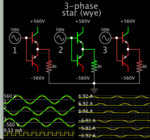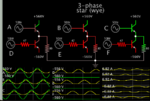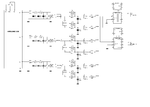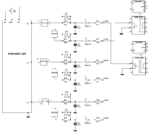dexterbot80
Member level 1
Hi,
what else should we know???
How many modifications did you make! ... and you want us to rectify it ...
Klaus
I just want to spin this motor but the halfbridge get into short circuit.
I just want to know what I did wrong in my circuit
I want to make him spin for the start and then I will make all the improvements in the circuit.
This is my control circuit output ALow and Ahigh - halfbridge driver input signal

- - - Updated - - -
Low and high side IGBTs activated simultameously...
I understand this - please check again my control circuit output signals






